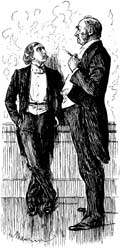Hump Flying
Claire Chennault and his Flying Tigers had lost the fight for the Burma Road, and another plan was needed to keep the steady stream of war materials flowing from the British and Americans in India to Chiang Kai-shek in the southwest of China. In the Air Transport Command we would wake up in India, gnaw on a chunk of Nepalese hash the size of your fist, crank up the twin engines on the old C-47 at the refueling base in Dinjan, and seek enlightenment in the friendly skies beyond the rock pile. The turn-around in Kunming was remarkable only for the beautiful weather and the boring cuisine — dinner was usually a plate of fava beans and some warm and watery beer with an off taste. I think the chow was purposely bland and awful. If the food was good nobody would have gotten up the next morning and done the return flight to the sunny south shore of the lovely Brahmaputra, where the temperatures were so hot you got blistered if you touched the plane.
By the time I was driving that route it was well-marked by the sparkling aluminum below, wrecks from the boys who suffered hypoxia in heroic attempts to fly above the peaks, or wrecks from the boys who tried to break the laws of physics one way or another. My tactics were simply to fly low and slow all the way, and after I’d done it a few times I knew the passes to fly through, the peaks to skirt, and most importantly, how not to overload the kite with more munitions than Old Chiang ever intended to fire at the Japanese anyway. (Meanwhile, up in the northwest, a fellow named Mao was kicking ass and taking names — a lot of it Kuomintang ass, but some Japanese ass as well, but the strategery in Kunming was to lay in munitions and supplies for the ROC in hopes that after the war they’d take care of the commie menace. Worked out like that sort of strategery usually does, but that’s another story.)
We signed on for 650 hours of hell, flying across unforgiving terrain in equipment that wouldn’t be allowed off the ground these days. The Air Corps hype about the hump made it out to be the most unforgiving terrain anywhere, but those boys had never flown the Nazi Express out of Santiago, Chile via Aconcagua and on to western Paraguay like I did for a while in the new post-war era. Nor had they flown very far up river into Tibet.
The Tibetans didn’t exactly welcome tourism, but the day that the Army Air Corps told me I now had a 750 hour commitment or another year in service to the Chinese war machine (whichever came last), I pulled a Huck Finn: “I couldn’t stand it no longer and I lit out.” I had a C-47 full of K-rations and light weapons. Instead of heading for the eternal springtime of Kunming where the Camellias were always in bloom and the favas could choke a horse, I got in touch with my inner entrepreneur and I stole that plane and I stole that cargo. I hooked a left turn and followed the river up the Tsangpo Gorge, the deepest canyon on the planet. It looked like a whitewater rafting dream below me and a vertical tropical paradise on the left and on the right. But with just a little careful maneuvering and one hard left turn around a a mountain that almost brought me down it wasn’t too many hours before the river opened out into a braided turquoise fantasy meandering across the high plateau.
Some other time I’ll share the secrets I learned in Lhasa, and tell of my trek through Bhutan and Nepal, my encounter with the still living Drukpa Kunley and some of the wisdom he shared. Today, I must point you to the truth about Tibet, as far as the truth can be known or told. If you were curious enough to click on the picture above, you’d already know what I’m yakking about.
posted in Global Concern, Truth and Falsehood | 2 Comments



